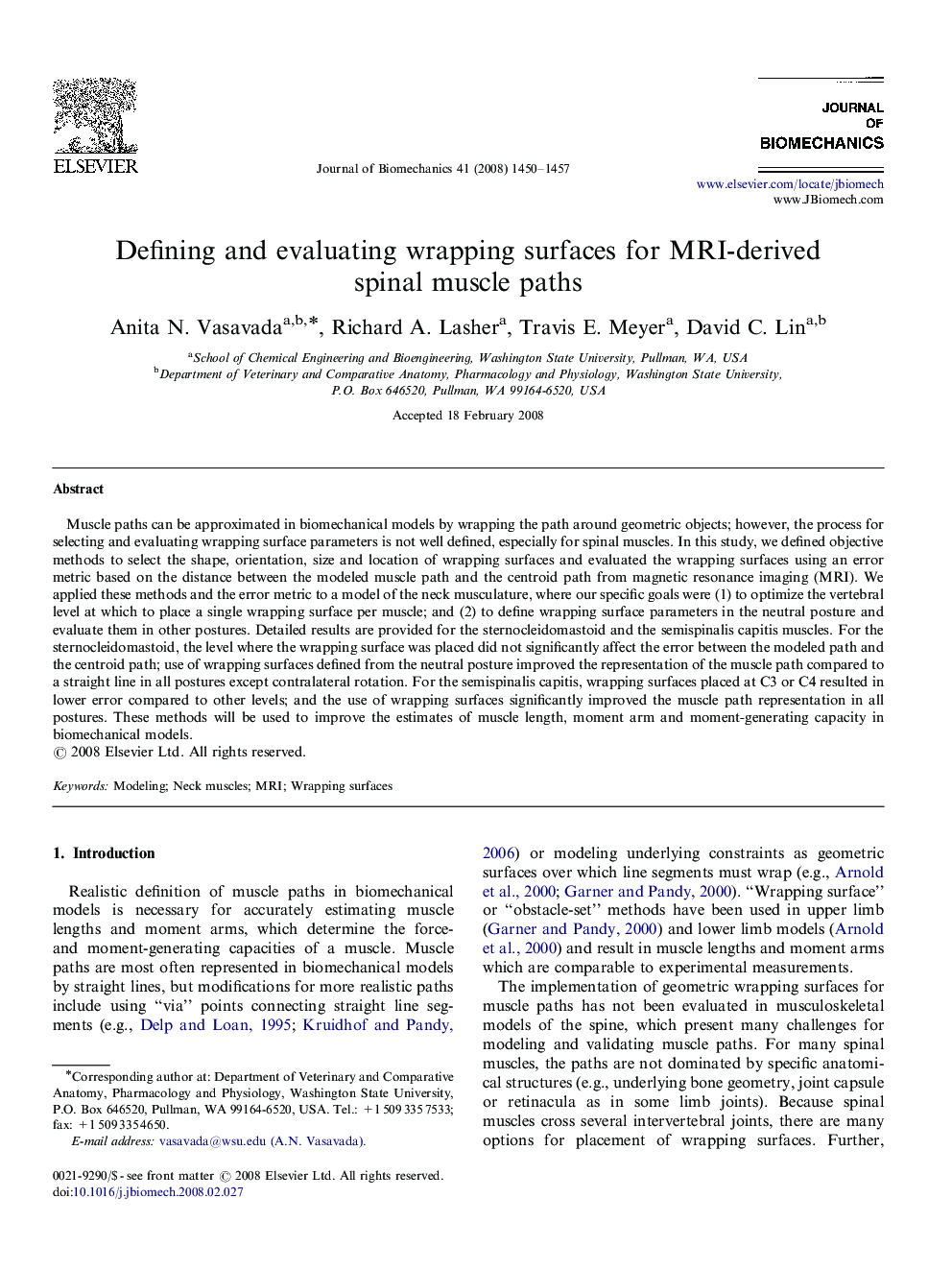| Article ID | Journal | Published Year | Pages | File Type |
|---|---|---|---|---|
| 875270 | Journal of Biomechanics | 2008 | 8 Pages |
Muscle paths can be approximated in biomechanical models by wrapping the path around geometric objects; however, the process for selecting and evaluating wrapping surface parameters is not well defined, especially for spinal muscles. In this study, we defined objective methods to select the shape, orientation, size and location of wrapping surfaces and evaluated the wrapping surfaces using an error metric based on the distance between the modeled muscle path and the centroid path from magnetic resonance imaging (MRI). We applied these methods and the error metric to a model of the neck musculature, where our specific goals were (1) to optimize the vertebral level at which to place a single wrapping surface per muscle; and (2) to define wrapping surface parameters in the neutral posture and evaluate them in other postures. Detailed results are provided for the sternocleidomastoid and the semispinalis capitis muscles. For the sternocleidomastoid, the level where the wrapping surface was placed did not significantly affect the error between the modeled path and the centroid path; use of wrapping surfaces defined from the neutral posture improved the representation of the muscle path compared to a straight line in all postures except contralateral rotation. For the semispinalis capitis, wrapping surfaces placed at C3 or C4 resulted in lower error compared to other levels; and the use of wrapping surfaces significantly improved the muscle path representation in all postures. These methods will be used to improve the estimates of muscle length, moment arm and moment-generating capacity in biomechanical models.
